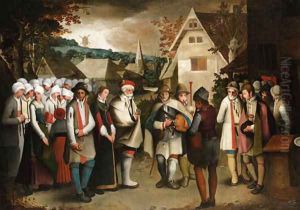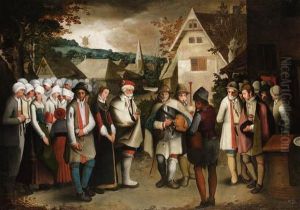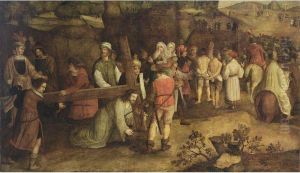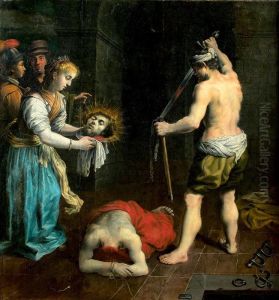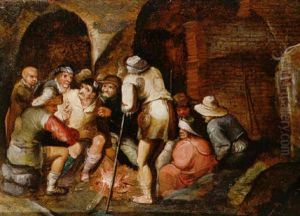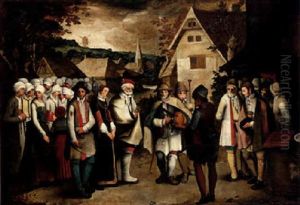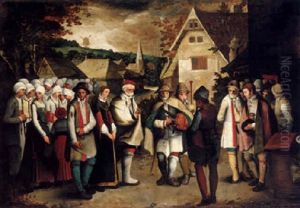Nicolas Baullery Paintings
Nicolas Baullery, also spelled Bollery or Balluery, was a French painter born in Paris around 1560. He is known primarily for his work in the late Renaissance and early Baroque periods. Baullery came from a family of artists and was the son of a goldsmith. His training as an artist began under the guidance of his father and was later influenced by the prominent French painter, landscape artist, and etcher Jacques Stella, with whom he is believed to have collaborated.
Baullery's artistic career was marked by his versatility; he was accomplished in several genres, including landscape, portraiture, and religious subjects. Although not as renowned as some of his contemporaries, Baullery’s work was respected in his time, and he contributed to the artistic landscape of France during a period of significant transition in European art. His style combined elements of the late Renaissance with the emerging Baroque sensibility, characterized by an attention to detail and a keen interest in naturalism.
Despite a relatively successful career, Baullery did not leave behind a large body of work, or at least not much has been clearly attributed to him, as he was often overshadowed by more famous artists of the era. However, he did achieve a level of recognition, as evidenced by his admission to the French Royal Academy of Painting and Sculpture. His landscapes are particularly noted for their serene beauty and delicate rendering of natural features.
Nicolas Baullery passed away in Paris in 1630. While his legacy may not be as prominent as that of some of his peers, he remains a figure of interest for those studying the nuances of French Renaissance and early Baroque painting. His works are a testament to the artistic endeavors of the period and provide insight into the transitional nature of art from the 16th to the 17th century.
